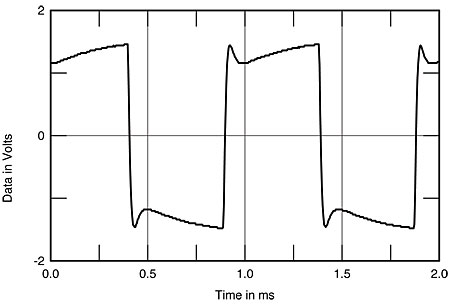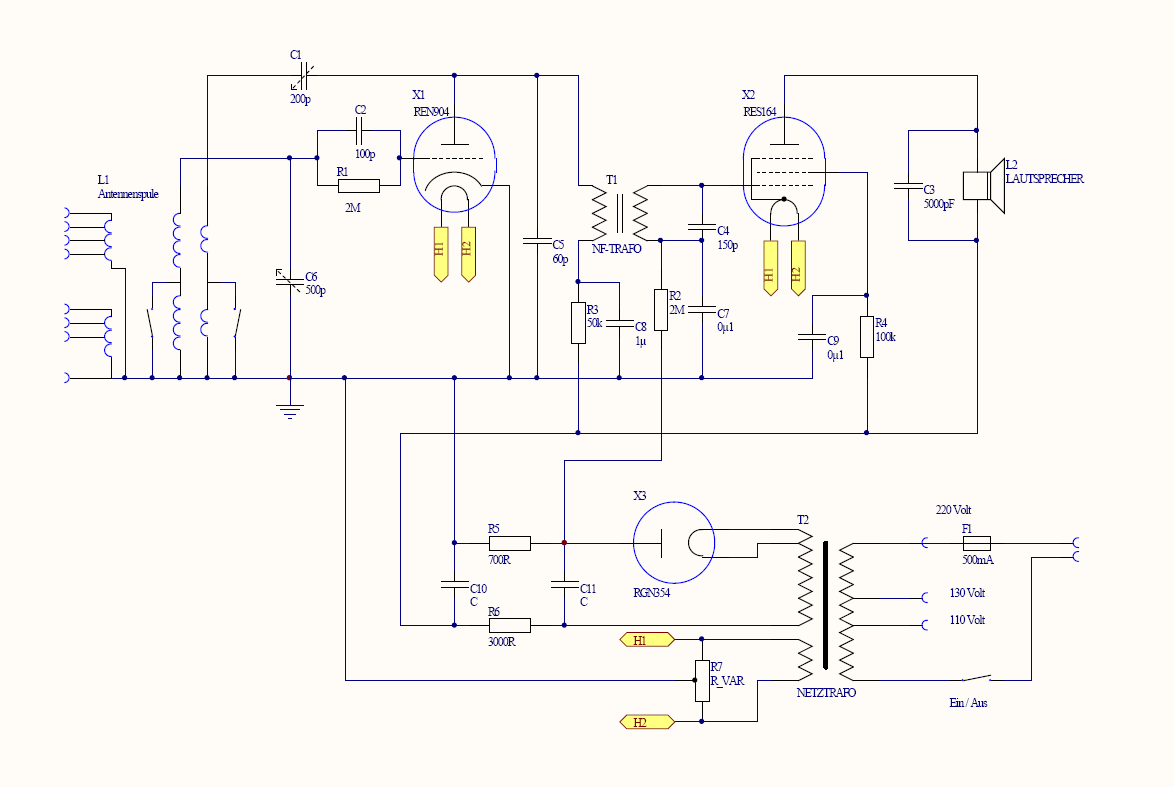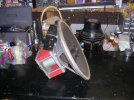That depends on topology. True for Futterman, not true for Circlotron or other true push-pull amps.FWIW, OTL amplifiers are inherently asymmetric; positive excursions to speakers will mismatch negatives, at least for source impedance,
even with carefully matched vacuum tubes, which do not stay matched with any amount of aging.
-
WANTED: Happy members who like to discuss audio and other topics related to our interest. Desire to learn and share knowledge of science required. There are many reviews of audio hardware and expert members to help answer your questions. Click here to have your audio equipment measured for free!
You are using an out of date browser. It may not display this or other websites correctly.
You should upgrade or use an alternative browser.
You should upgrade or use an alternative browser.
Stereophile's Jim Austin disagrees w Atkinson; says tubes have something that can't be measured
- Thread starter teched58
- Start date
are you not using diamond floor tiles like the rest of us all are?Just making sure that your floor will be scratched, no matter what.
computer-audiophile
Major Contributor
It's certainly appealing to make out of that once if one likes to deal with tubes. I also once thought of driving electrostats directly OTL with tubes. I had built speakers with Rennwald electrostats in the early seventies. Mr. Rennwald had designed such an OTL HV-amp. The way he had done it, however, it was a life-threatening apparatus.I built a couple of OTL tube amps but did not have much success.
- Joined
- Jan 27, 2019
- Messages
- 7,286
- Likes
- 12,190
Your MBL nearfield set-up makes them much less omni sounding than in their traditional large room/ open space setups.
But still, which do you prefer the most for their imaging. I've heard your Joseph's and thought that a tight well focused soundstage was one of their big strong points.
Yes the Joseph speakers are known for great imaging. I'd say the Josephs are actually the closest in tonal and imaging characteristics to the MBLs I owned. A bit tighter focus than the MBLs (though I didn't find the MBLs nearly as diffuse sounding as many suggest, in my room). But nothing quite beat the MBLs for "disappearing." The MBLs sounded more like "Quad ESLs with guts."
But even the Joseph speakers don't outdo my Thiel speakers in terms of imaging focus. That's always been a particular quality of Thiel speakers that I (and many others) have perceived. The Josephs can sound quite distinct in terms of imaging, yet when I switch in the Thiels it's like putting on a new updated glasses prescription - you don't quite know your vision may be a bit soft until you experience it even more corrected. The Thiels seem to "line up" all the sonic information so sonic images are both more sharply "focused" and have a greater sense of apparent density. Thiel could claim this is a result of the Time/Phase coherence of their design, though I know that is controversial. So
I don't know, maybe it's down to the whole design, and they did a nice job with the coax mid/tweeter design or something. But the Joseph speakers still "disappear" a bit more than the Thiels, closer to the MBLs.
Oristo
Member
Indeed, and IMO exceptionally difficult, since it did not simply require listeners to detect differences but also associate them with a specific amplifier.All-time famous test.
A more interesting (to me) test would be whether more differences were heard (or not) when amplifiers were actually switched (or not).
Beyond that, also IMO, speaker choice is problematic. I do not recall specifically hearing a Maggie IIIa for any extended session,
but it reportedly is fairly characteristic, in being easy to drive but tricky to set up and integrate treble and bass.
Beyond that, they are far from a point source, so also highly directional.
In sessions with more than one listener, they would all be hearing somethings differently.
Coming back to their easy-to-drive aspect, Maggies store less energy than conventional cones and voice coils.
Speakers including e.g. 12-inch dynamic woofers would be more demanding amplifier loads;
original Thiels in a switched vs not test might have yielded significantly different results.
- Joined
- Jan 27, 2019
- Messages
- 7,286
- Likes
- 12,190
Those are the best ever made? Huh.
While I can appreciate Doodski's enthusiasm (the Premier 12s are held as something of a classic among CJ fans, they still sell very well on the used market) your confusion is certainly warranted. As you see from the measurements, the Premier 12s aren't close to best ever anything. The only thing I've owned that probably measured worse was the Eico HF81 Integrated Tube Amp. And my CJ Premier 16LS2 tube preamp won't be winning any ASR awards either.
mhardy6647
Grand Contributor
- Joined
- Dec 12, 2019
- Messages
- 11,371
- Likes
- 24,574
True in general.Futterman amps. Thank you all for the interesting replies. And yes, the Futterman circuit is non-standard and non-symmetrical.
Think that higher load impedance is better.
Back in the good old days, Philips (e.g.) made high impedance speakers and matching OTL amplifiers.
Even in the older (not necessarily gooder, though) days, so did Stephens.
Last edited:
computer-audiophile
Major Contributor

Oh man, I only see crooked square waves here.... was the Eico HF81 Integrated Tube Amp.
Last edited:
- Joined
- Jul 21, 2019
- Messages
- 2,361
- Likes
- 3,542
To date, I've experienced nothing to suggest that tubes have an inherent "sound", but it's pretty easy to tweak tube amplifier circuits in order to achieve "sweeter, more relaxed" sonics. In some cases, the modifications can be as simple as reducing negative feedback, until frequency response starts rolling off at oh, say 5 kHz. I guess there's no reason why similar mods can't be done with solid state circuitry, but the latter is a lot less forgiving of stupid mistakes, whereas tubes are pretty hard to kill.
I recall one (John Atkinson?) test report of a lovely little tube integrated amplifier boasting "A-Motion Sound". Square wave response showed a bit of ringing: Perhaps just the thing to make those solo female vocals and violins to "A-Mote" a bit more! But I personally would prefer to leave the A-Moting up to the performer and recording engineer.
I recall one (John Atkinson?) test report of a lovely little tube integrated amplifier boasting "A-Motion Sound". Square wave response showed a bit of ringing: Perhaps just the thing to make those solo female vocals and violins to "A-Mote" a bit more! But I personally would prefer to leave the A-Moting up to the performer and recording engineer.
computer-audiophile
Major Contributor
This set has worked very well. A friend has this combination. The speakers are comparable to the very good Philips 9710M Alnico, but with 800 Ohm voice coil.Back in the good old days, Philips (e.g.) made high impedance speakers and matching OTL amplifiers.
Last edited:
Whoa, I've never seen 500 ohm drivers. Since nobody else tried it, there's probably a good reason.True in general.
Back in the good old days, Philips (e.g.) made high impedance speakers and matching OTL amplifiers.
Even in the older (not necessarily gooder, though) days, so did Stephens.
View attachment 285622
mhardy6647
Grand Contributor
- Joined
- Dec 12, 2019
- Messages
- 11,371
- Likes
- 24,574
Oristo
Member
Bandwidth-limited square wave response has ringing. Gibbs phenomenonSquare wave response showed a bit of ringing
Negative feedback with delay (e.g. global feedback in vacuum tube amplifiers) exacerbates it.
computer-audiophile
Major Contributor
High impedance field coil loudspeakers are found in old radio sets.Whoa, I've never seen 500 ohm drivers. Since nobody else tried it, there's probably a good reason.


Live and learn.High impedance field coil loudspeakers are found in old radio sets.


Oristo
Member
Instead of permanent magnet, some used another loudspeaker coil for both magnetic field and power supply inductor.High impedance field coil loudspeakers
- Joined
- Jul 21, 2019
- Messages
- 2,361
- Likes
- 3,542
The mini Chinese tube amplifiers I experimented with had limited low-frequency output, but had extended high frequency response (well over 100 kHz). Sometimes too much so, because I'd see a resonant peak in need of taming.Bandwidth-limited square wave response has ringing. Gibbs phenomenon
Negative feedback with delay (e.g. global feedback in vacuum tube amplifiers) exacerbates it.
Square wave output from such amplifiers typically showed ringing only on the leading edge of the wave. When I introduced bandwidth-limiting to the high frequencies, my square waves would become more sinusoidal as frequency increased. And I suppose that ideally, output would be purely sinusoidal by 20 kHz, because I am not creating hifi for dogs or bats.
Last edited:
computer-audiophile
Major Contributor
I started my electronic finger exercises with the construction of detector receivers.Live and learn.
- Joined
- Jan 27, 2019
- Messages
- 7,286
- Likes
- 12,190
Which one is that? I'd like to know.
People got it right: CJ Premier 12 monoblock amps, 140W/side. Here's one of them on the top of my rack:
All my amps/source equipment is in a separate room from my speakers, so I don't get to see the glowy tubes while listening. But I prefer a clean look in my listening room, with little equipment to distract.
My first tube amp many years ago was the smaller CJ MV55 EL34-based amp (45W). Subjectively, it was what some people think of as a classic old tube amp sound: lush and relaxed, not very powerful sounding. As I got ever larger speakers going through my system it seemed to run out of steam and bass could get flabby. I splurged for the Premier 12s and those issues largely were solved. Still not the tightest bass in the world, but no speaker I've had, even "tough to drive" speakers, have sounded starved of power or flabby. (Though I don't listen super loud).
When I had a Bryston 4B3 in my system a while back to compare to the Premier 12s, I felt I heard cleaner, tighter sound from the Bryston. For instance: A sonic spectacular like the Conan soundtrack theme uses an extra massive orchestra and expanded horn section, playing as loud as humanly possible. Especially in the loudest sections the brass seemed to be more cleanly rendered, like I could keep turning it up and it would stay super clean. Likewise, in sections that had always sounded a bit muddy on my system - where the brass plunges down to join the cellos and double bass in their power region, things could get sort of blurred and indistinct and slightly bloated. The Bryston seemed to have the speakers in firmer grip, so the brass/cellos/double bass cleared up and I could finally hear the separate lines more easily. I leave the plausibility of any of that to the reader.
And while we are in the realm of the un-demonstrated, somewhat apropos to the theme of the thread:
I've also mentioned before that I bought a second pair of CJ Premier 12s a while back. Mine are old and a bit more moth eaten, and I got a great deal on a pair in mint condition that had more recently been to the CJ factory for a full check up and replacing anything that was looking tired. It was also the case that the owner had paid a wack of money for the "Teflon Cap Upgrade" (vs the I-can't-remember caps those replaced). My main motivation was being able to replace my old CJs with a refreshed pair.
But...again, subjectively (see my tag line) I was surprised that this second pair sounded distinctly different. It came with totally different power tubes (KT120s vs 6550s, as well as different brands of input tubes). When I tried the same tubes in my originals, the new and old amps sounded much more similar (and I bought the same tubes for my originals, hence both were then matched tube-wise). But even with the same compliment of tubes, the "upgraded" CJs still seemed subtly but distinctly different, less bright a bit darker up top from my originals, but more distinctly the bass seemed reliably tighter. All my usual bass torture tests, which could make my system sound more flubby, were tightened up, as was pretty much any track with bass.
Ideally I wanted to do a blind test between the two sets of amps, but in the end it wasn't as easy as I'd hoped, and I had to sell one of the pairs for some money. I sold the upgraded pair because they were a faster sell (and, subjectively, I ended up slightly preferring my originals anyway). Too bad, as it sure would have been interesting to me to have tried to confirm or disconfirm what seemed like distinct differences.
So, in the context of the Jim Austin "tube magic" discussion, my own approach to the above would be:
1. If in fact I was hearing a real difference, it would be measurable. No magic.
2. If I wasn't in a position to measure (not my forte) or blind test to confirm what I was hearing, I wouldn't claim to any skeptic my subjective impressions demonstrated anything at all. I would also hold my own impressions with the caveat it could be imagination. However, if the impressions remained distinct and reliable that I liked one over the other, I would be ok going with those impressions. It's my system, I only have to please myself, biases included.
Cheers.
Last edited:
Similar threads
- Replies
- 410
- Views
- 21K
- Replies
- 269
- Views
- 45K
- Replies
- 40
- Views
- 71K

